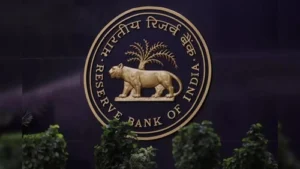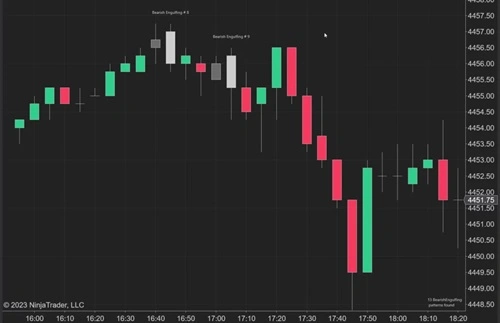You see, back in the day, the Indian government came up with a clever savings scheme to encourage you to save more without worrying about security. And yes, the PPF is not just any old savings account, that much is clear. At a really nice fixed interest rate of 7.1% annually, it locks in your funds.
There is a 15-year lock-in time, though. Hey, you can continue in five-year increments if you so wish. Considering taxes? Covered by PPF. Under Section 80C of the Income Tax Act, the money you deposit into your PPF account earns you some nice tax deductions down the line. And the high point? You pay no taxes at all on your interest. And if you need some of that money before the allotted period is up? Nothing to worry about there too. Alright, now let’s get to the actual positives and negatives of the PPF account, shall we?

Advantages of Investing in PPF
1. Awesome Tax Breaks
One excellent method to obtain some substantial tax advantages is to invest in a Public Provident Fund (PPF). How and why? Well, up to a specific amount, the money you deposit into your PPF account is deductible under Section 80C of the Income Tax Act. This implies that the amount you invest in PPF can be deducted from your taxable income, which simply results in a lower total tax burden on you, and who wouldn’t want that? And yes, there is no tax on either the interest you earn or the amount you take out at maturity.
2. Stable Interest Rates
The government sets a fixed interest rate on PPF accounts once a quarter, did you know that already? Well, it is now 7.1% annually. This fixed rate gives you a sense of stability and predictability, which is especially comforting for those who don’t like taking risks, you know?
3. Absolutely Safe and Secure
You see, with PPF accounts, your principal sum and the interest earned are assured because the scheme is supported by the Indian government. Investors can be rather confident because of this government support as they know their money is safe from market risks. That’s the very reason why people who don’t want to take risks with their savings, always prefer to go with PPF rather than riskier investment options.
4. Perfect for Long-Term Savings
PPF emphasizes long-term savings, and its 15-year lock-in period promotes systematic saving practices. For some of you, this 15-year period may sound way too extensive, but for major financial objectives like retirement, children’s education, or home ownership, this very tenure lets you save a sizable lump sum over time.
5. Handy Loan Facility
One of the best parts about PPFs is that sure, your savings are locked in, but have the option to take a loan against that very PPF account of yours. Loans against your balance can be taken out with PPF from the third year after account opening until the sixth year. At the conclusion of the second year preceding your loan application, you can borrow up to 25% of the balance. Not so good, but not bad either, right?
6. Flexible Withdrawals
And here’s the thing, you see, sure PPF has a lengthy lock-in term, but after the seventh year, partial withdrawals are allowed, giving some flexibility in your hands regarding your locked-in savings.
Disadvantages of Investing in PPF
1. Not Easy to Access Your Money
The low liquidity of PPF investments is one of its main drawbacks, and this is the very thing that makes many employees’ moods off. How and why? Well, before you can get your whole funds, there is a 15-year lock-in term, which we already talked about, right? After the seventh year, you can take limited partial withdrawals that might not cover large costs. PPF is thus less appealing to people who want instant access to their money or who favor short-term investments.
2. Fixed Interest Rate, Kind Of A Double-Edged Sword
Though it can be a disadvantage when market rates are rising, a fixed interest rate can also provide stability. Should interest rates increase, there may be better investing choices than a fixed-rate PPF. This implies that in a high interest rate environment, your PPF investment could not do as well and you might lose out on possible profits from market-linked investments.
3. Annual Contribution Hassles
Maintaining the account active with PPF requires a yearly contribution. What’s that though? Annual investments must be at least ₹500, with a maximum of ₹1.5 lakh. Miss a year, and your account becomes inactive. And yes, reactivating it requires the required contribution plus a penalty for each year that is missed. Not quite appealing, or is it? For those who might find it difficult to make consistent contributions because of budgetary limitations, this can be inconvenient.
4. Restrictions for NRIs
An NRI may not find PPF to be the ideal option, but exactly why? PPF accounts started before their relocation abroad can be maintained by NRIs, but new ones cannot be opened. And yes, on top of this restriction, there is another one: extending a PPF account beyond its original maturity is off the table for NRIs.
5. No Market-Linked Returns
Sure, a PPF account is safe for your savings, but if you want big returns for your money, then it might not be the one option you should be choosing. There are other options like mutual funds or equities that are market-linked, but somewhat safe as well. And compared to a PPF account, they give better returns over time, of course, minus all the limitations that come with a PPF account, you know?
Quick Comparison Between Advantages and Disadvantages of PPF Account
|
Advantages |
Disadvantages |
| Significant Tax Benefits | Low Liquidity with 15-Year Lock-in Period |
| Fixed and Predictable Interest Rates | Fixed Interest May Not Keep Up with Market |
| Government-Backed Security | Annual Contributions Required |
| Ideal for Long-Term Savings | Limited Access for NRIs |
| Loan Facility Available | No Potential for Market-Linked High Returns |
| Partial Withdrawals Allowed After 7 Years |


















